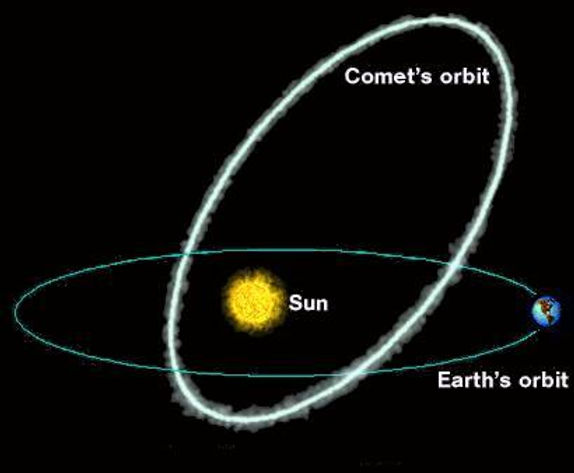THE FROST LINE!

FROST LINE at about 3.5 AU
Inside the frost line: Too hot for hydrogen compounds to form ices - therefore only rocky asteroids and planets are found here.
Outside the frost line: Cold enough for ices to form - therefore icy moons, comets, and other icy celestial bodies are found here. Ice is a major component of their total mass.
Comet Facts
-
Formed beyond the frost line, comets are icy counterparts to asteroids.
-
Short-term comets believed to originate in Kuiper Belt.
-
Long-term comets believed to originate in Oort Cloud.
-
The nucleus of a comet is like a “dirty snowball.”
-
Most comets do not have tails.
-
Most comets remain perpetually frozen in the outer solar system.
-
Only comets that enter the inner solar system grow tails.
-
Comets do not have natural satellites.
-
Comets do not have rings.
-
Comets have an unstable surfaces.
Comet
In our solar system, a comet
1) must be in orbit around the sun,
2) was formed in the outer solar system (most are in the Kuiper Belt and Oort Cloud),
3) is irregularly shaped,
4) is composed of mainly ice with some rock and hydrocarbons,
5) and has NOT "cleared the neighborhood" around its orbit of other objects.
Comet Anatomy
-
Nucleus: actual object made up of ice or dust
-
Coma is atmosphere that comes from heated nucleus.
-
Plasma tail is gas escaping from coma, pushed by solar wind.
-
Dust tail is pushed by photons.
-
Larger debris follow comet’s orbit; source of meteoroids.

Comet's Orbit

